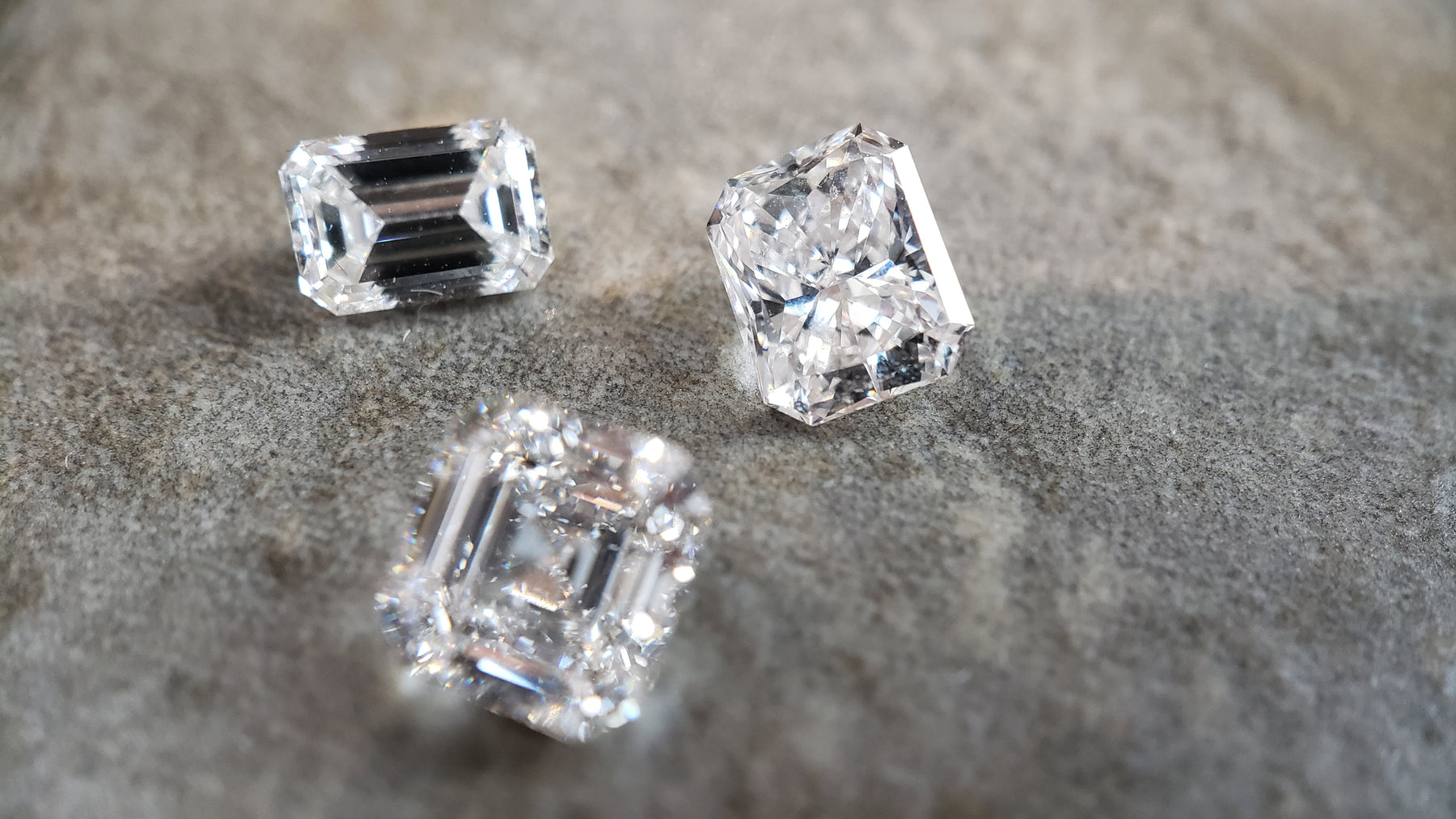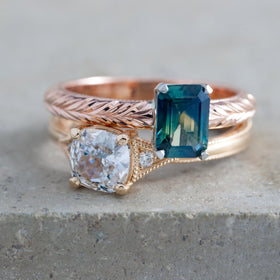
Diamonds - The Four C's
Clarity
Clarity refers to a diamond’s position on the Flawless (FL) to Included (I1-I3) scale that is used by the internationally recognized GIA. Clarity characteristics are classified as inclusions. The size, number, positions within the stone and colour of inclusions determine the clarity grade. Clarity grading is done under 10x magnification.
The clarity grades are:
- Flawless (FL) and Internally Flawless (IF) are the rarest grades.
- Very Very Slightly Included (VVS1 and VVS2) — Inclusions are so minute that a skilled grader may take 20 minutes to find the inclusions within these stones.
- Very Slightly Included (VS1 and VS2) — These diamonds have minor inclusions that are difficult to find. Typically the inclusions will be towards the outer edge of the stone.
- Slightly Included (SI1 and SI2) — Such diamonds will have noticeable inclusions under 10x magnification.
- Included (I1-I3) — These diamonds have visible inclusions to the unaided eye, usually in the centre of the stone.
How important is clarity when you are buying a diamond?
After the carat weight, most of the public will say that clarity is the most important factor. However, most trained jewellery professionals see things differently. Colour and cut can affect the overall brilliance and beauty of a diamond more than clarity. The whiteness of a diamond can be seen from a distance, whereas clarity is graded under magnification. If you are working within a budget, think about choosing an average clarity diamond (SI1, SI2, I1) with high colour rating like D,E,F (see below about colour.)
Colour
Colour in diamonds usually refers to the absence of colour. Most diamonds have some trace of yellow or brown undertone. The GIA colour scale starts at D and ends with Z. A “D” colour diamond is the rarest and most expensive, E and F stones have a very slight tint of colour. The tint of colour becomes more noticeable as you work your way down the letter scale. Fancy colour diamonds such as blue, pink, purple, or red, are naturally occurring. More recently it has become popular to heat treat diamonds to produce these colours.
Cut
Cut is the shape, symmetry, and finish of a polished diamond. The cut affects both the brilliance of the diamond and the weight yield of the rough. A poor cut frequently will be cut too deep or too shallow creating a dark or dull diamond. There are some diamonds graded as “ideal”, there can be quite a variance between different cutters on what ideal is. But here are some numbers to keep in mind:
- table size 53-59%
- crown angle 32-35º
- pavilion depth percentage 43-44%
- the girdle should be thin to medium thickness
- the culet should be small to none
Carat
This is a measurement of weight, not size. The metric carat, which equals 0.200-gram, is the standard unit of weight for diamonds and most other gemstones.
We hope this helps when choosing the right diamond for you!



Leave a comment